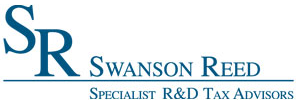The New Era of R&D Tax Credits
From manual interviews to data-driven automation, AI is revolutionizing how companies substantiate R&D tax claims. Explore the technology, the key players, and find the right solution for your business.
A Paradigm Shift in Compliance
The shift from recollection-based studies to real-time, data-driven substantiation is not just about efficiency—it's a strategic evolution in risk management and compliance.
The Traditional Model
- ✖Labor-Intensive: Hundreds of person-hours consumed in manual interviews and documentation.
- ✖Disruptive: Diverts key technical talent from innovation to backward-looking surveys.
- ✖Subjective Evidence: Relies on human recollection, introducing bias and audit risk.
- ✖Retrospective: Documentation is created months after the work is completed.
The AI-Powered Approach
- ✔Automated & Efficient: AI algorithms analyze data, reducing internal effort by up to 90%.
- ✔Non-Disruptive: Passively ingests data from existing systems (Jira, GitHub, Payroll).
- ✔Objective Evidence: Creates a time-stamped, system-generated audit trail.
- ✔Contemporaneous: Captures the digital footprint of R&D activity as it happens.
Market Explorer
The market for AI-driven R&D tax software is dynamic and expanding. Use the filters below to explore the key players and compare their offerings based on your company's needs.
Comparative Analysis: Key Differentiators
This chart visualizes how platforms differentiate themselves. Select filters above to dynamically update the comparison across different market segments.
Find Your Fit
Answer a few questions about your business, and we'll recommend the platforms best suited to your needs. This tool helps translate the report's strategic advice into a personalized recommendation.
What best describes your company's profile?
Based on your profile, here are our top recommendations:
The Future is Automated & Continuous
The market's trajectory is clear. AI-powered platforms are becoming the new standard for R&D tax substantiation. This shift transforms the credit from a static, annual compliance task into a dynamic, real-time financial management tool, embedding the process of substantiation directly into the lifecycle of innovation itself.

